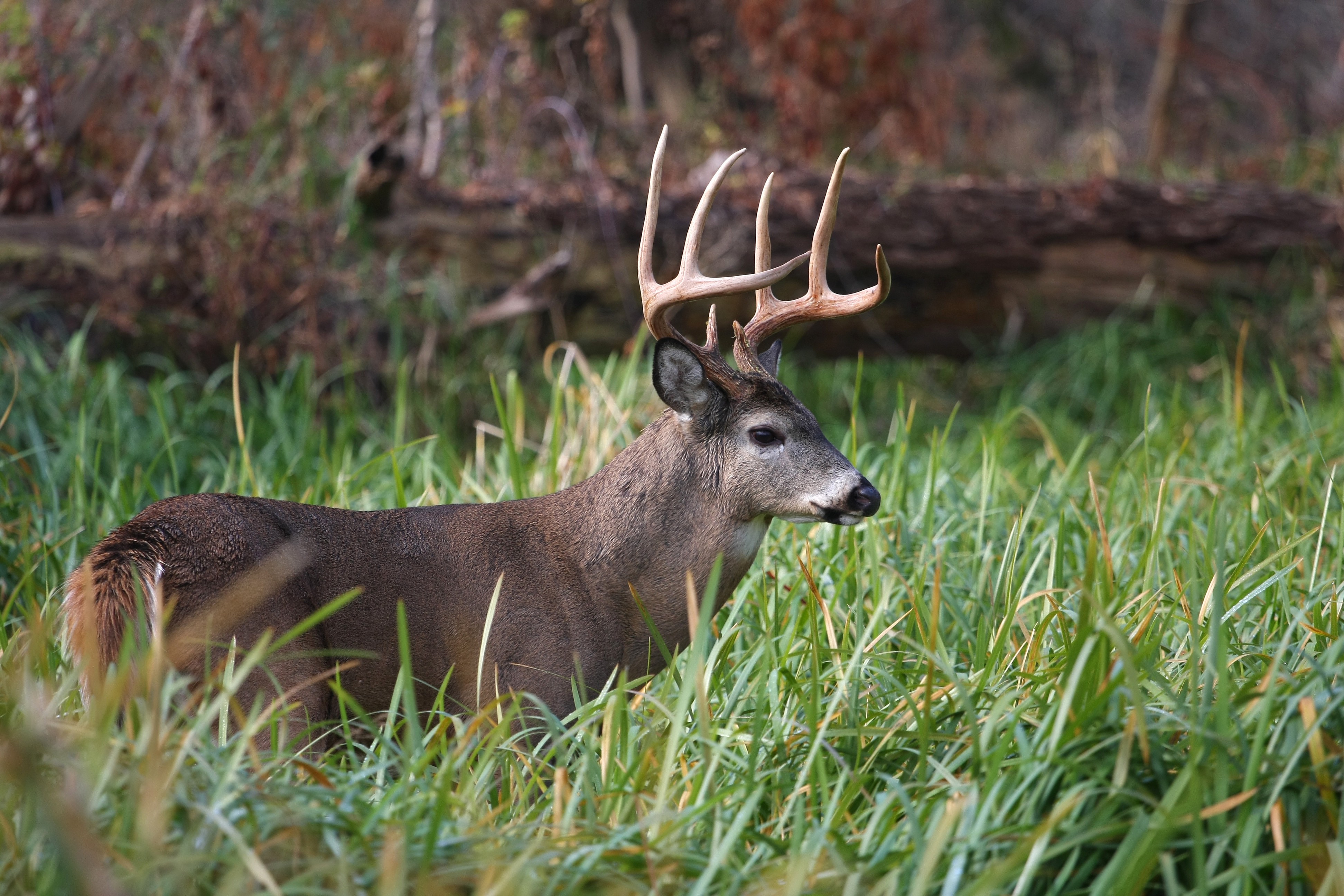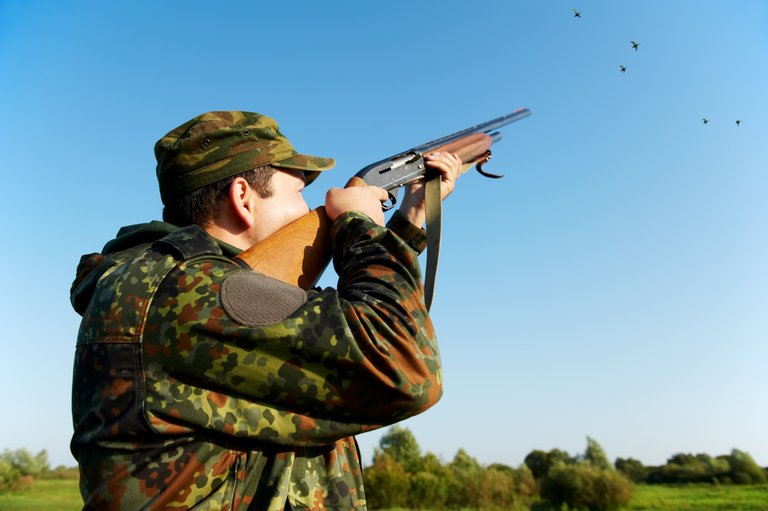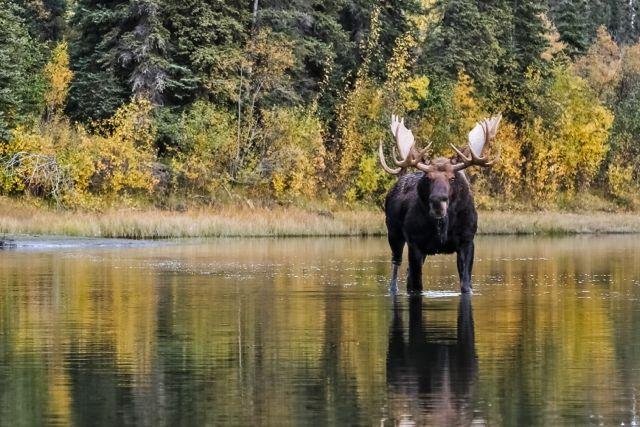North vs. South: The Mason-Dixon Rutting Conundrum

It is a word as old as the hunters themselves who take to the forest each year in search of that one special trophy. An event that is responsible for more fake sick days, marital disputes and breaks in previously scheduled commitments than all other yearly events combined. The time of the year that can make a hunter lose track of days and sometimes forget to sleep, eat or even shower. It is legendary in its own right and rightfully so. I’m talking about the rut, my friends, and all its magical glory!
OK, maybe I’m overselling it just a little bit. But to deny that the rut is anything short of spectacular would be an injustice. Talk to anyone who has ever hunted—or even just observed a white-tailed deer’s movements and change in behavior during the rut—and you’ll begin to understand why so many of us take to the woods on this very special occasion.
Don't Get Stuck in a Rut
However, it’s important to understand how the rut works and how to maximize your opportunities in the field during this time. In my experience, when people speak highly of the rut, they do so not taking into account the differences in geography. What happens and works for your Uncle Bobby up in Minnesota doesn’t necessarily correlate with what’s going on down in Arkansas.
If you’re new to this, you’re probably wondering what this “rut” is that I keep referring to. Simply put, the rut is the mating season marked by changes in weather and shortening of daylight hours. Beginning in late spring, bucks will begin to develop their new set of antlers underneath a layer of living tissue known as velvet. Over the course of the summer months, the new set of antlers will grow from two small bulbs to a full rack of antlers but rounded at the tips instead of pointed, like you’re probably used to seeing in pictures and magazines. In the late summer months, as the antlers underneath the velvet begin to harden, the velvet will eventually dry out and shrivel. Bucks will begin to rub against hard surfaces like tree trunks to strip the velvet away and expose the rack.
Bucks begin to separate from each other and establish territories, rubbing trees to curb their frustration and creating scrapes on the ground to inform other bucks in the area that they are trespassing.
As we enter early fall, the buck's diet shifts from greens to hard mass, such as acorns, to supplement his fat reserves for the upcoming winter. It is at this point that we enter the rut. Technically, this is considered the "pre-rut," but by definition, any activity like the examples to follow is considered to be evidence of the rut. The buck's testosterone is spiking, increasing his aggression toward other males and his interest in females. Bucks begin to separate from each other and establish territories, rubbing trees to curb their sexual frustration and creating scrapes on the ground to inform other bucks in the area that they are trespassing. They will defend these territories and the does within them, sometimes to the death. From here, we enter the primetime of the rut. As the does begin to come into estrous (their breeding cycle), the bucks will spend day and night searching out potential mates. And they will deprive themselves of sleep and sustenance just to breed and ward off uninvited guests.
Timing is Everything
Now that you know what the rut is and when it occurs, let’s try to narrow the gap on when exactly in fall you should be planning on taking those few extra sick days that you’ve saved all year! For years, Charlie Alsheimer and Wayne Laroche, two of the nation’s premier authorities on the white-tailed rut, have released their rutting moon theory, based on the lunar cycles following the autumnal equinox. Unfortunately, it wasn’t until I started writing this article that I learned that Charlie Alsheimer passed away in December 2017. He most certainly will be missed.
Their theory for the 2018 season, along with theories based on biology, can be found on the website LegendaryWhiteTails (https://community.legendarywhitetails.com/blog/2018-rut-predictions-for-every-theory/). It’s important to remember that no one can gauge with 100% certainty when exactly the rut will kick off and what will trigger it. The information is out there to help you determine when you should be paying extra close attention so that you can jump on opportunities as they arise. Your own scouting efforts in the time period leading up to the events, coupled with this information, are a way to formulate a strategy on how and when you think it best to make a move.
Northern Exposure and...
Most information is based on the northern states where there’s a very real 'need to breed' mentality in order to ensure that their genes are passed on.
The majority of the information regarding the rut that you’re going to come across out there in the world, by reading or word of mouth, is information based on the northern states. Due to their climate, there’s a very real “need to breed” mentality in order to ensure that their genes are passed onto future generations. Kyle Stapleton of Faith Family Hunting (@kyle_stapleton on Instagram), who hunts the rut in both Ohio and Kentucky, says, “Typically, the ruts in these two states are fairly similar. In early November, you can see rutting activity going on until close to Thanksgiving. I have seen rutting activity take place sooner before in Ohio, but still not like it can be in November. It’s different for everyone, but around November 4-6 in Ohio has been some of the most active and fun days I’ve had in the woods hunting whitetail.”
When asked what advice he would offer to someone taking a trip to his area, Kyle says, “Try to plan for a week of hunting, and I would come in early November. Some people are big on doe estrous and other scents and attractants, and that’s fine, but when a deer is ready, it’s ready.” He concludes with, “This is the opportunity for the big bucks who are nocturnal to come out during the daytime. Sometimes the big, older bucks won’t go too far to chase does. So, if you have an idea of where that big buck likes to hang out, it could be a safe bet to stay in that general area. If you can find the does, you’ll find the bucks.”
...Southern Charm
Slip south into the southern states, and things start to get a little more interesting—maybe even a little more complicated. It’s true that rutting behavior is rutting behavior, regardless of where you hunt. But a change in tactics to accommodate the different geography may prove beneficial. Cable Smith, host of the Lone Star Outdoor Show (www.lonestaroutdoorshow.com and @lonestaroutdoorshow on Instagram), regularly hunts Texas and Oklahoma during the rut. “A lot of your bucks that you see on camera prior to the rut are bucks that are going to be killed the first or second weekend of the season,” he says. It’s at this point that the October Wall (or October Lull) takes effect and pulls the deer away from their normal patterns. Look for the acorn groves and have these areas thoroughly scouted before they start to drop. Heavily trafficked trails and droppings in such an area is a prime indicator that you’re on the right path.
If a doe breeds unsuccessfully during the first rut, she will come into estrous during the next cycle and the bucks will actively seek her out.
“By the beginning of November in north Texas, you should start to notice a change in the buck’s behavior toward other males and females in the area. But in south Texas, this change may not occur until just before or right around Christmas," Cable advises. “Rattling, especially in south Texas, can be an extremely effective method to enticing those bucks to come looking for a fight. Tuck back into the senderos and give it half a minute's worth of rattling to pique their interest.” Finally, when asked about the possibility of a second rut that occurs later in the year, Cable informs me, “Yes, absolutely. I believe in and have seen a second rut take place in the later part of the season. If a doe breeds unsuccessfully during the first rut, she will come into estrous during the next cycle and the bucks will actively seek her out. On top of that, a first-year doe may not actually come into estrous until later in the year, so this keeps the window of opportunity open through the late season.”
Whether you’re in the snowy forests of the north, the corn fields of the Midwest or the hardwood bottoms of the south, one thing is for certain: The rut in all its splendor is waiting to show you some of the most exciting times the outdoors have to offer. Adapting to the lands and formulating a strategy now will put you in the best position possible for when that boss of a buck makes his move. Remember, the hunt is just a very small part of the equation, and being an outdoorsman is much more than just sitting in a tree and waiting for that buck to swing by. Take in the sunrise as it wakes up the forest and warms your face from the cold. And allow yourself to be amazed, year after year, at the fiery colors that sweep through the treetops as the leaves change. I wish you all good luck this year in your outdoor endeavors, my friends.


